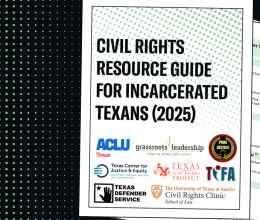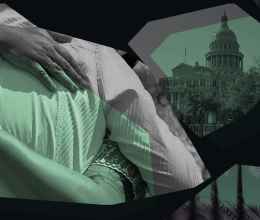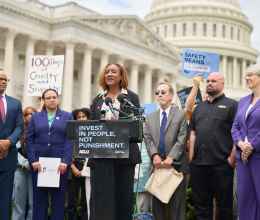
by Jim Kouri, CPP
America's combined federal, state and local adult correctional population reached a new record of almost 6.9 million men and women last year, an increase of 130,700 people since December 31, 2002, according to the US Justice Department.
The correctional population of 6,889,800 includes people incarcerated in prisons and jails as well as those on probation and parole. In calendar year 2003, 1,387,269 adults were incarcerated in federal and state prisons and 691,301 inmates served time in local jails. And as of December 31, 2004, 4,073,987 adults were on probation - a period of supervision in the community following a conviction - and 774,588 on parole - a period of conditional supervised release following a prison term.
About 3.2 percent of the nation's adult population, or 1 in every 32 adults, were incarcerated or on probation or parole in last year. The adult probation population grew by 49,920 men and women, slightly less than half the average annual growth of 2.9 percent since 1995. The nation's parole population grew by 23,654 men and women in 2004, or 3.1 percent, almost double the average annual growth of 1.7 percent since 1995. The disparity in new probation sentences may be attributed to the rise in mandatory sentencing statutes which dictate prison or jail sentences for certain felonies and misdemeamors. Felonies are offenses punishable by one year of more in state and federal prisons, while misdemeanors are punishable by less than a year in local jails. Violation offenses -- punishable by less than 30 days -- were included within the misdemeanor figures.
At the end of last year, the number of adults on probation or parole reached a record high of 4.8 million, which was 70 percent of all persons under federal, state or local correctional supervision. More than 1 million of the nation's probationers and parolees were in Texas (534,260) and California (485,039).
Four states had an increase of 10 percent or more in their probation populations in 2004: Kentucky (up 17 percent), Mississippi (up 15 percent) and Nebraska and New Hampshire (each up 12 percent). The adult probation population decreased in 19 states, led by Minnesota (down 10 percent).
As of last December 31, more than half of the probationers were white, 30 percent were black, 12 percent were Latino and 2 percent were of other races. Women comprised 23 percent of all adults on probation. Civil libertarians voiced their concerns over the disproportionate number of African-Americans in the US penal system, but crime statistics indicated a disproportionate number of crimes being committed by blacks.
About 71 percent of offenders on probation were under active supervision and were required to regularly report to a probation authority in person, by mail or by telephone. Forty-nine percent of all probationers had been convicted of a felony, 49 percent of a misdemeanor and 2 percent of other infractions. Twenty-five percent had been convicted of a drug offense, 17 percent for driving while intoxicated or under the influence of alcohol, 12 percent for larceny or theft, 9 percent for other assault, 7 percent for domestic violence, 6 percent for minor traffic infractions, 5 percent for burglary, 4 percent for fraud and 3 percent for sexual assault.
Of the almost 2.2 million probationers discharged from supervision, about 3 in 5 had successfully met the conditions of their supervision, but 20 percent -- almost a half-million -- violated their probation. About 16 percent were incarcerated because of a rule violation or a new offense, and 4 percent fled before completing their required term.
Seventeen states had double-digit increases in their parole populations. Five states had increases of 20 percent or higher: North Dakota (53 percent), Alabama (31 percent), Kentucky (27 percent), New Hampshire (25 percent) and New Mexico (23 percent). Twelve states had decreases, led by Hawaii (down 11 percent).
Of those in the community last year who were on parole, 13 percent were women. Forty-one percent were black, 40 percent were white, 18 percent were Hispanic and 2 percent were of other races. About 83 percent of all parolees were under active supervision and were required to regularly contact a parole authority in person, by mail or by telephone.
About 470,500 parolees were discharged from supervision last year. Figures show that less than half of the parolees fulfilled their penal obligations. Forty-seven percent had successfully met the conditions of their supervision, 38 percent were returned to incarceration with a new sentence or because of a rule violation, and about 9 percent had absconded.
Source: US Department of Justice, National Criminal Justice Reference Center, Chief of Police Magazine






